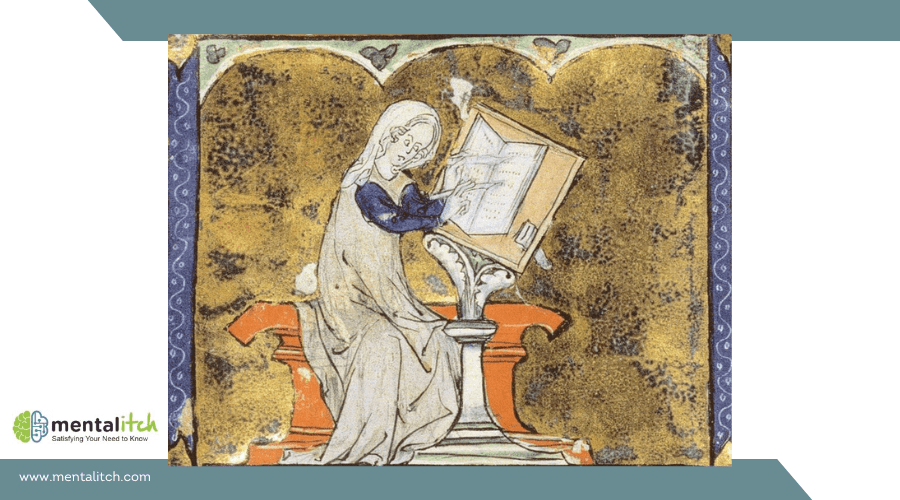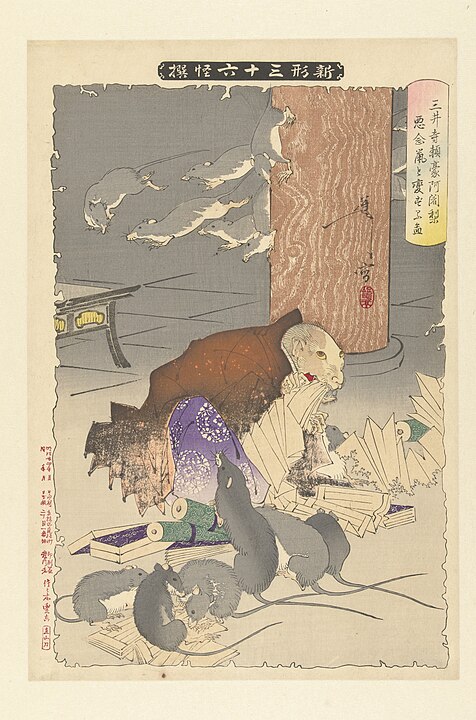Medieval folklore is filled with chilling tales of werewolves, vengeful spirits, and powerful witches that continue to fascinate and terrify. These haunting stories, deeply rooted in the fears and beliefs of the time, offer a glimpse into a world where the supernatural and the mundane intertwine. From cursed knights transforming into savage beasts to witches casting ominous prophecies, these legends explore the boundaries of human nature and the supernatural.
Werewolves in Medieval Lore
Medieval stories of werewolves fascinated audiences with eerie tales of humans cursed to become savage wolves. These narratives depicted people who transformed into terrifying wolves under a curse, often triggered by the full moon. The transformation involved not just physical change but also a descent into uncontrollable violence and cannibalism.
These legends captured deep fears of the unknown and the supernatural. Werewolves symbolized the terrifying loss of human identity, a theme that resonated with medieval communities wary of the monstrous. The stories vividly described werewolves hunting at night, wreaking havoc on villages, and leaving destruction in their wake.
Cursed individuals in these tales often struggled with their dual nature, torn between human conscience and animalistic urges. This internal conflict made for compelling stories as werewolves dealt with the consequences of their transformations.
The Legend of Bisclavret
The Legend of Bisclavret, written by Marie de France in the 12th century, tells the story of a noble knight named Bisclavret who transforms into a werewolf. He confides in his wife, but she betrays him by stealing his clothes, leaving him trapped in wolf form.
The werewolf eventually encounters the king, who takes him in due to his gentle nature. When the unfaithful wife visits the court, the wolf’s reaction exposes her betrayal. The king forces her to return Bisclavret’s clothes, allowing him to become human again. The tale highlights loyalty, betrayal, and the duality of human nature.
Bisclavret’s Mysterious Transformation
The saga showcases Bisclavret’s dual nature, combining noble knighthood with feral instincts. The curse thrusts the knight into a life where trust and secrecy dictate his survival. His transformation isn’t just physical but also metaphorical, representing the medieval struggle and the duality of human nature.
Betrayal and Lost Humanity
The theme of betrayal is central to this haunting tale. Bisclavret’s wife, driven by greed or fear, steals his clothes, preventing him from returning to his human form. This deceit traps him in a bestial existence and shows the dark consequences of broken trust. Bisclavret’s lost humanity reminds us how betrayal can destroy lives and damage the soul.
Bisclavret seeks revenge against his wife. His quest for vengeance highlights the profound impact of betrayal on his character. The legend of Bisclavret is a powerful story about the destructive nature of deceit and the fragile boundary between human and beast.
Redemption and Royal Favor
Bisclavret sought revenge but unexpectedly met the king, who offered him a chance at redemption. Curious about the werewolf’s behavior, the king spared Bisclavret and brought him to his court. This mercy allowed Bisclavret to prove his loyalty and reclaim his humanity.
Winning the king’s favor was not easy. Bisclavret faced many challenges to regain trust and honor. Through these trials, Bisclavret’s legend highlights the complexities of identity, trust, and the consequences of actions.
Vengeful Spirits and Ghosts
In medieval ghost stories, vengeful spirits seek atonement for their past wrongdoings. Barred from Heaven, these spirits haunt the living in a desperate quest for peace. The stories reflect societal fears and attitudes toward sin and redemption, exploring themes of justice and morality.
Early depictions often feature conniving and depraved women as ghosts. These female specters are portrayed as malevolent and manipulative, serving as cautionary tales about moral corruption. These narratives reveal concerns about women’s roles and powers in medieval culture, providing insight into the era’s collective mindset.
Dark Arts and Witchcraft
Witches, seen as malevolent figures with dark magic, captivated medieval communities. They were believed to practice dark arts, consort with demons, cast harmful spells, and wield supernatural powers. These beliefs were deeply ingrained in daily life.
The belief in witchcraft led to widespread fear and persecution. The Malleus Maleficarum, a medieval treatise on witchcraft, fueled witch hunts and trials across Europe. It depicted witches as agents of the devil, leading to the execution of primarily women and marginalized people.
Understanding medieval witchcraft helps grasp the fear and superstition that shaped these legends. Eerie tales from this period include figures like the Witch of Berkeley, known for her dark arts and evil deeds. Her restless spirit symbolizes the fear of witchcraft and the unknown.
The Witch of Berkeley
The Witch of Berkeley made a dark pact, trading her soul for supernatural powers. Her ominous prophecies often came true, spreading fear across the land. She practiced dark arts and performed evil deeds, becoming infamous. Her story ends grimly, revealing her ultimate fate. Her restless spirit symbolizes the fear of witchcraft and the unknown.
She was believed to have extraordinary powers and instilled terror with her malevolent deeds. Legends claim she summoned storms and caused shipwrecks.
Witches were often blamed for misfortunes, leading to witch trials to eliminate these perceived threats. The Witch of Berkeley’s story shows how fears could escalate into widespread panic and persecution, reflecting the intense superstitions of the era.
Grim Final Journey
Known for her supernatural activities, her final journey was chilling. She tried to secure a Christian burial to escape the demonic forces she once wielded. However, evil forces sought to claim her soul.
Her tragic ending is a reminder of the dangers of dark arts and the elusive search for redemption.
Fairies and the Supernatural
Fairies in medieval folklore were seen as enchanting yet dangerous beings linked to the supernatural. They were often depicted as deceitful and connected to malignant forces. During the 16th and 17th centuries, church elites considered fairies instruments of evil. Chroniclers like Burchard of Worms linked fairies to demonization in Christianity. Fairies were frequently mentioned in witch trials, showing a strong belief in their wicked influence. They were not just mischievous sprites but entities that could bring harm and misfortune. This blend of Pagan and Christian elements made fairies symbols of enchantment and peril.
Demonic Encounters
Encounters with those believed to be possessed by demons also caused dread. Clerics helped in engaging in spiritual battles between good and evil. Saints versus demons were central to the spiritual landscape. Inspired by figures like Turpin, Archbishop of Rheims, Clerics engaged in literal and symbolic fights against evil. Tales of saints casting out demons were seen as real confrontations with darkness. This era highlighted the importance of spiritual intervention, viewing demoniacs as needing divine help.
Mythical Creatures and Beasts
European folklore is rich with tales of creatures that stirred awe and terror. Mythical beings like the basilisk, griffin, and dragon-filled medieval imaginations. These creatures played significant roles in cultural beliefs. Some notable beasts include:
Basilisk: Known as the ‘king of serpents,’ its gaze could turn people to stone.
Griffin: With a lion’s body and an eagle’s head, it represented divine power and protection.
Dragon: Fire-breathing monsters symbolizing chaos and destruction but also wisdom.
Tales of ogres, phoenixes, trolls, golems, jinn, and Kraken added horror and mystery to medieval myths.
Conclusion
Medieval legends are filled with vengeful spirits, witches, and mythical creatures, exploring themes of good and evil, loyalty, and treachery. These stories reflect deep-rooted fears and moral dilemmas that still resonate today. The next time you hear a ghost story or a tale of witchcraft, remember that these aren’t just stories but echoes of an age-old struggle for justice and redemption.


